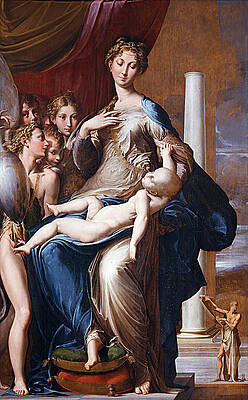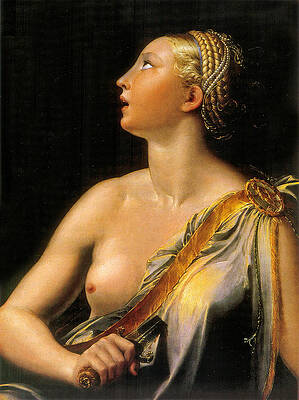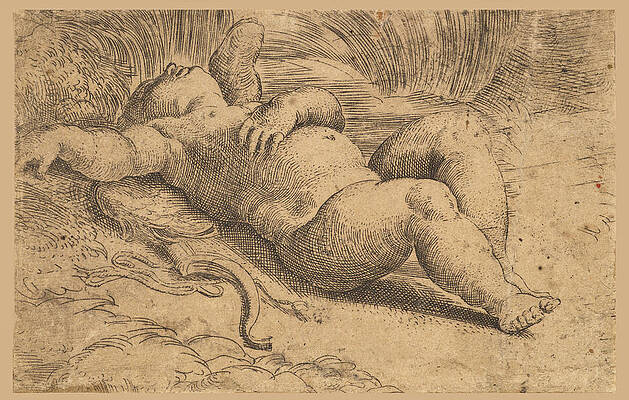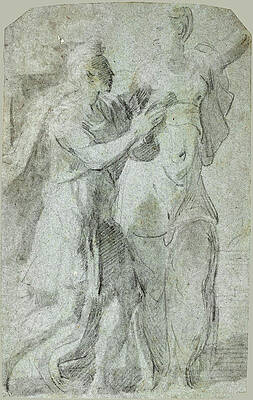Parmigianino
Paintings

Bow-carving Amor
The Madonna and Child with Saints
The Conversion of Saint Paul
The Mystic Marriage of Saint Catherine
Portrait of a young woman
Portrait of Lorenzo Cybo
Portrait of a Collector
Madonna with the Long Neck
The Madonna and Child
Lucretia
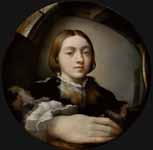
Self-portrait in a convex mirrorThe Conversion of Saint Paul Portrait of a young woman
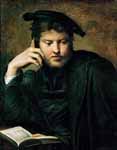
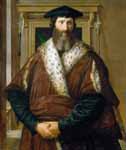
Portrait of a Dignitary (Condottiere Malatesta Baglione)

The Madonna and Child with Saints
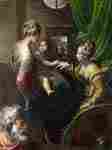
The Mystic Marriage of Saint Catherine
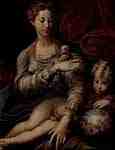

Madonna, Saint Stephen and John

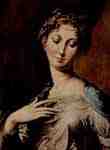
Madonna with the Long Neck, detail

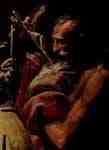

Portrait of a young woman, called Anteia

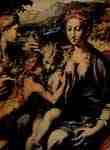
Enthroned Madonna and Saints, detail
Drawings
Virgin and Child
Cupid Sleeping
Lucretia
The Lovers
The Mystic Marriage of Saint Catherine of Alexandria
Three Feminine Heads
Interior of a Painter's Studio
Huntsmen sounding his horn with a staghunt in the distance
Augustus and the Sibyl
Four Studies of an eagle
Venus Disarming Cupid





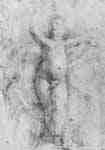
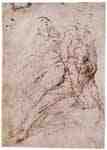
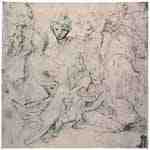
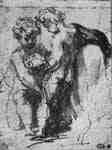

Fine Art Prints | Greeting Cards | Phone Cases | Lifestyle | Face Masks | Men's , Women' Apparel | Home Decor | jigsaw puzzles | Notebooks | Tapestries | ...
Bow-carving Amor
Girolamo Francesco Maria Mazzola (also known as Francesco Mazzola or, more commonly, as Parmigianino ("the little one from Parma"); 11 January 1503 – 24 August 1540) was an Italian Mannerist painter and printmaker active in Florence, Rome, Bologna, and his native city of Parma. His work is characterized by elongation of form and includes Vision of Saint Jerome (1527) and the Madonna with the Long Neck (1534).
Early years
Parmigianino was the eighth child of Filippo Mazzola and one Donatella Abbati. His father died of the plague two years after Parmigianino's birth, and the children were raised by their uncles, Michele and Pier Ilario, who according to Vasari were modestly talented artists.[2] In 1515, his uncle received a commission from Nicolò Zangrandi for the decoration of a chapel in San Giovanni Evangelista; a work later completed by a young Parmigianino. By the age of eighteen, he had already completed the Bardi Altarpiece. In 1521, Parmigianino was sent to Viadana (along with painter Girolamo Bedoli who was to marry his cousin) to escape the wars between the French, Imperial, and papal armies. In Viadana, he painted two panels in tempera, depicting Saint Francis for the church of the Frati de' Zoccoli, and the Mystical Marriage of Saint Catherine for San Pietro. He also worked in San Giovanni and met Correggio, who was at work on the fresco decorations of the cupola.
Work in Fontanellato and travel to Rome
Vision of Saint Jerome (detail).
In 1524, he traveled to Rome with five small paintings, including the Circumcision of Jesus and his Self-portrait in a Convex Mirror, seeking patronage of the Medici pope, Clement VII. Vasari records that in Rome, Parmigianino was "celebrated as a Raphael reborn". In January 1526, Parmigianino and his uncle, Pier Ilario, agreed with Maria Bufalina from Città di Castello, to decorate the church of San Salvatore in Lauro with an altarpiece of the Vision of Saint Jerome (1526–27, National Gallery, London). Within a year, the Sack of Rome caused Parmigianino, and many other artists, to flee.
Bologna and return to Parma
He resided in Bologna for nearly three years. At around 1528, he painted the Madonna and Child with Saints (Pinacoteca, Bologna), then later in 1528, he painted Madonna con la Rosa (Dresden) and Madonna with Saint Zachariah (Uffizi). By 1530 Parmigianino had returned to Parma.
In 1531, Parmigianino received a commission for two altarpieces, depicting Saint Joseph and Saint John the Baptist, from the unfinished church of Santa Maria della Steccata. The brotherhood overseeing the church advanced him salary and promised him the supplies and materials; however, by 1535, the project was unfinished. In December, he nominated Don Nicola Cassola, a Parman cleric at the Roman Curia, to act as his legal representative. Parmigianino authorized him to collect the 50 gold scudi from Bonifazio Gozzadini for the Madonna with St. John the Baptist and St. Zacharias.
In 1534, it was decided that the Madonna dal collo lungo (the Madonna with the Long Neck) would hang in the chapel of the family of Elena Baiardi.
Parmigianino had probably expected to succeed Correggio in the favour of the church. However, in April 1538, the administrative offices commissioned initially Giorgio Gandini del Grano, then Girolamo Bedoli, to decorate the apse and choir of the Parma Cathedral.
It is believed that at this time, he became a devotee of alchemy. Vasari hypothesizes that this was due to his fascination with magic. Scholars now agree that Parmigianino's scientific interests may have been due to his obsession with trying to find a new medium for his etchings. As a result of his alchemical researches, he completed little work in the church. He was imprisoned for two months for breach of contract after the Confraternita decided unanimously to ban him from continuing in their church. He was replaced between 1539 and 1540 by Giulio Romano, who also promptly withdrew from the contract.
Parmigianino died of a fever in Casalmaggiore on 24 August 1540 at the age of 37 years. He is buried in the church of the Frati de' Servi "naked with a cross made of cypress wood on his chest".
Among those closely influenced by Parmigianino were his cousin Girolamo Mazzuoli and Girolamo's son Alessandro Mazzuoli; Pomponeo Amidano; Giacomo Bertoia; and Francesco Borgani.[3]
Works
Parmigianino Selfportrait (1540).
Parmigianino was also an early Italian etcher, a technique that was pioneered in Italy by Marcantonio Raimondi, but which appealed to draughtsmen: though the techniques of printing the copper plates require special skills, the ease with which acid, when substituted for ink, can reproduce the spontaneity of an artist's hand attracted Parmigianino, a "master of elegant figure drawing".[4] Parmigianino also designed chiaroscuro woodcuts, and although his output was small he had a considerable influence on Italian printmaking. Some of his prints were done in collaboration with Giovanni Jacopo Caraglio.
Selected works
Baptism of Christ (c. 1519) - Oil on wood, 197 x 137 cm - Gemäldegalerie, Berlin
Circumcision of Jesus (c. 1523) - Oil on wood, 42 x 31.4 cm; Detroit Institute of Arts
Self-portrait in a Convex Mirror (c. 1524) - Oil on wood, diameter 24.4 cm; Kunsthistorisches Museum, Vienna
Portrait of Lorenzo Cybo (1524) - Oil on panel, 126 x 104 cm, Statens Museum for Kunst, Copenhagen
Portrait of Galeazzo Sanvitale (1524) - Oil on panel, 109 x 81 cm, National Museum of Capodimonte, Naples
Portrait of a Collector (c. 1524) - Oil on panel, 86 x 94 cm, National Gallery, London
Madonna and Child (1525) - Galleria Doria-Pamphili, Rome
Vision of Saint Jerome (1526-1527) - Oil on panel, 343 x 149 cm, National Gallery, London
Conversion of Saint Paul (c. 1527) - Oil on canvas, 177.5 x 128.5 cm, Kunsthistorisches Museum, Vienna
Turkish Slave (Portrait of a Lady; c. 1533) - Galleria Nazionale di Parma
Cupid Making His Arch (c. 1533-1535) - Kunsthistorisches Museum, Vienna
Madonna with the Long Neck (1534–40) - Oil on wood, 216 x 132 cm, Uffizi, Florence
Portrait of a Young Woman (c. 1535) - Oil on canvas, 135 x 88 cm, Capodimonte Museum, Naples
Portrait of Pier Maria Rossi di San Secondo (c. 1535-1539) - Oil on panel, 133 x 98 cm, Museo del Prado, Madrid
Mito di Diana e Atteone (c. 1524) - affresco, Fontanellato, Rocca Sanvitale, Parma
Matrimonio Mistico di Santa Caterina (1529) - Oil on panel, 74.2 x 57.2 cm, National Gallery, London
See also
Self-portrait in a Convex Mirror (book)
Notes
Oil on wood, diameter 24.4 cm; Kunsthistorisches Museum, Vienna.
Vasari, Giorgio (Bull, George, translator) (1988). Lives of the Artists: Volume 2, pp. 185-99. Penguin Classics. ISBN 0-14-044460-2.
The picture amateur's handbook and dictionary of painters, by Philippe Daryl and Paschal Grousset, Londong, 1878.
Michelle Leicht, "Correggio and Parmigianino", exhibition, Metropolitan Museum of Art, 2001 (on-line review)
References
Parmigianino, Cecil Gould. ISBN 1-55859-892-8
Parmigianino: The Paintings, Mary Vaccaro. ISBN 88-422-1131-1
Parmigianino: The Drawings, Sylvie Beguin et al. ISBN 88-422-1020-X
The Story of Art, E.H. Gombrich, London : Phaidon Press, Ltd., 1995 ISBN 0-7148-3247-2
Parmigianino and European Mannerism Kunsthistorisches Museum Vienna in English
External links
Parmigianino's biography, style and artworks
Parmigianino Biography at the National Gallery
Parmigianino Gallery at MuseumSyndicate
Prints & People: A Social History of Printed Pictures, an exhibition catalog from The Metropolitan Museum of Art (fully available online as PDF), which contains material on Parmigianino (see index)
----
Fine Art Prints | Greeting Cards | Phone Cases | Lifestyle | Face Masks | Men's , Women' Apparel | Home Decor | jigsaw puzzles | Notebooks | Tapestries | ...
----
Artist
A - B - C - D - E - F - G - H - I - J - K - L - M -
N - O - P - Q - R - S - T - U - V - W - X - Y - Z
Retrieved from "http://en.wikipedia.org/"
All text is available under the terms of the GNU Free Documentation License








